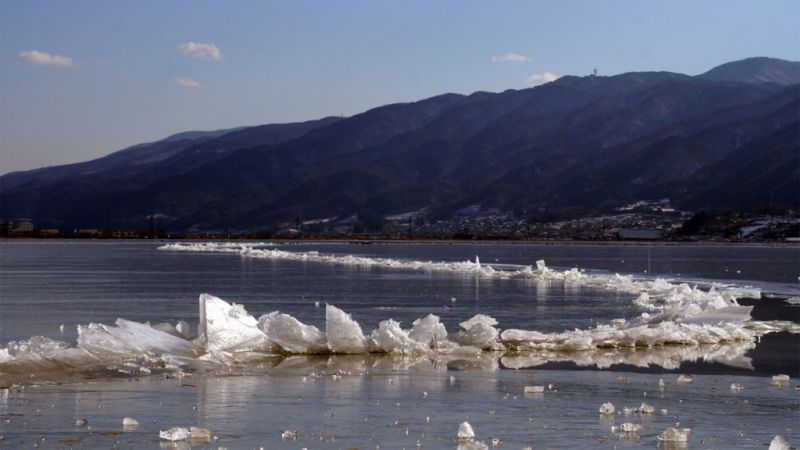
Suwa Taisha is one of the country’s oldest shrines and well worth a visit for anyone near Nagano Prefecture. Green Shinto has covered the shrine before (click here for a fully illustrated account). This time we focus on the peculiar natural phenomenon pictured above, thanks to an article taken from Japan Today.
**********
Chasing the Gods’ Crossing By John Asano Jan 29, 2020
A glistening white road upon a frozen lake surface in central Nagano Prefecture is where the gods walk. Across Lake Suwa, a natural phenomenon referred to as “The Gods’ Crossing” appears in winter when the ice forms ridges across the lake’s surface. The scene is out of this world.
Lake Suwa was the inspiration for the lake in the widely-loved 2016 anime Your Name (Kimi no Nawa). If you’re lucky enough to witness this natural wonder up close you’ll be whisked away into a fantasy wonderland. We had a chance to stop by and pay it a visit a few years back after visiting the famous Matsumoto Castle which is located nearby.


How The Gods’ Crossing forms
The lake has a natural hot spring under its surface which causes this anomaly to occur. During winter when the top of the lake freezes, the hot springs below are still warm and circulating. The warm water interacting with the cold ice forms pressure ridges or ice patterns on the lake surface. Some of the ridges reach heights of more than 30cm and look like sharp blades jutting out of the ice.
Changes in temperature from daytime to night cause the ice to crack and thus the holy road appears.

Locals believe that a god descends once a year to cross the lake via this mysterious road known as omiwatari (御神渡り) in Japanese. This journey sees the god descending across the Suwa Taisha (Suwa Grand Shrine) complex which has shrine buildings situated at opposite ends of the lake. At 1,200 years old, the complex is one of the oldest groups of Shinto shrines in Japan.
An ancient myth tells the story of a god from the main shrine (kamisha) traveling across the ice road to meet a goddess enshrined at the lower shrine (shimosha). It’s quite a heartwarming love story for such a cold place if you really think about it!
Probably the only time a crack in the ice a good sign
While it’s probably the last thing you’d want to see when visiting a frozen lake, a crack in the ice is considered a good omen which locals wait for anxiously every year. Unfortunately, the frequency with which the ice patterns appear has steadily dropped since the 1990s due to rising temperatures. This is truly a rare sight as the Gods’ Crossing doesn’t always form and there’s no real way to predict whether it will show up this year or not.
In 2018, the ice pathway appeared for the first time since 2013. Considering the warm temperatures this year it’s a bit of a toss-up. Blame it on global warming.
This is truly a rare sight as the Gods’ Crossing doesn’t always form and there’s no real way to predict whether it will show up this year or not.
When it does appear though, it’s like something of holy scripture. It’s even studied and analyzed by the locals to predict social conditions and annual crop harvests. They’ve been doing this since the 14th Century. Does that mean this is perhaps one of the world’s oldest weather records?
Thermal activity under the lake also means there are therapeutic onsen (hot springs) nearby. Loads of them can be found along the shores of the lake in the Kami Suwa area. At the very least, if the elusive phenomenon doesn’t occur, you can enjoy a nice hot spring experience on the lake that inspired Your Name for cool points on Instagram.
Lake Suwa itself is quite picturesque, even if the Gods’ Crossing doesn’t make an appearance this year. If you are looking to get out and explore a new and interesting part of the country, then put Lake Suwa near the top of your list of places to visit.
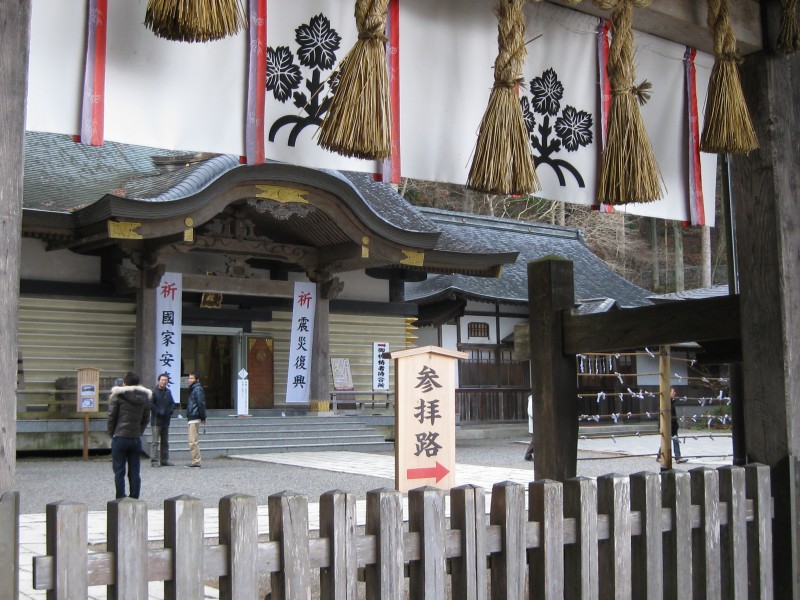
(this and following photos by John Dougill)
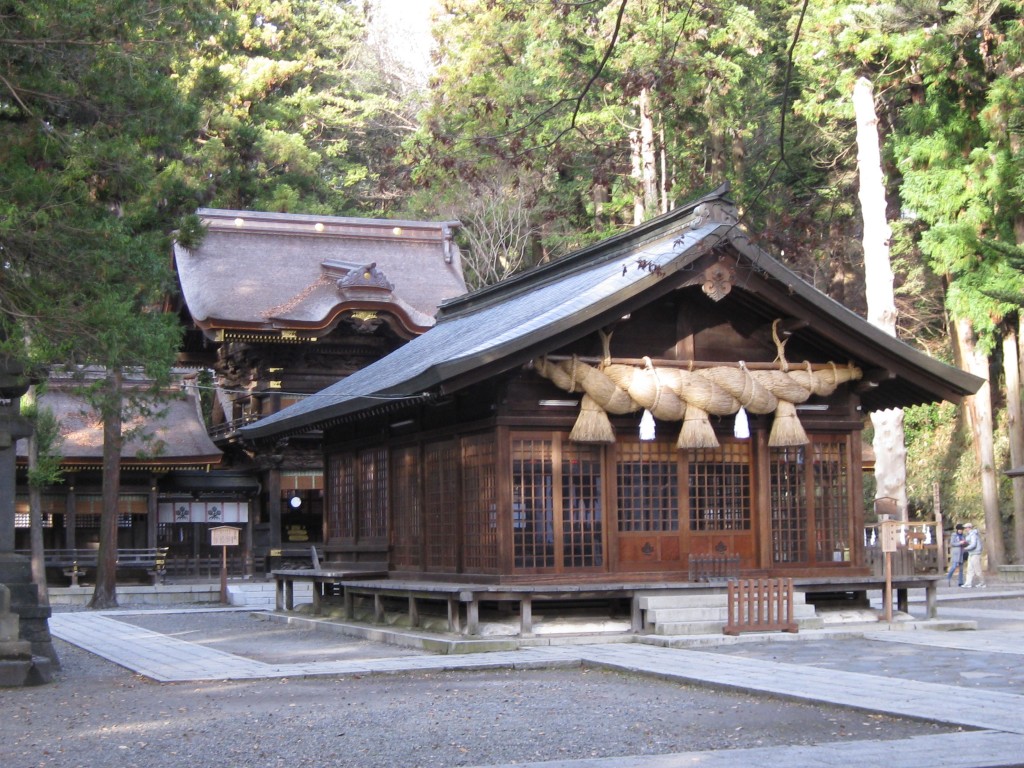
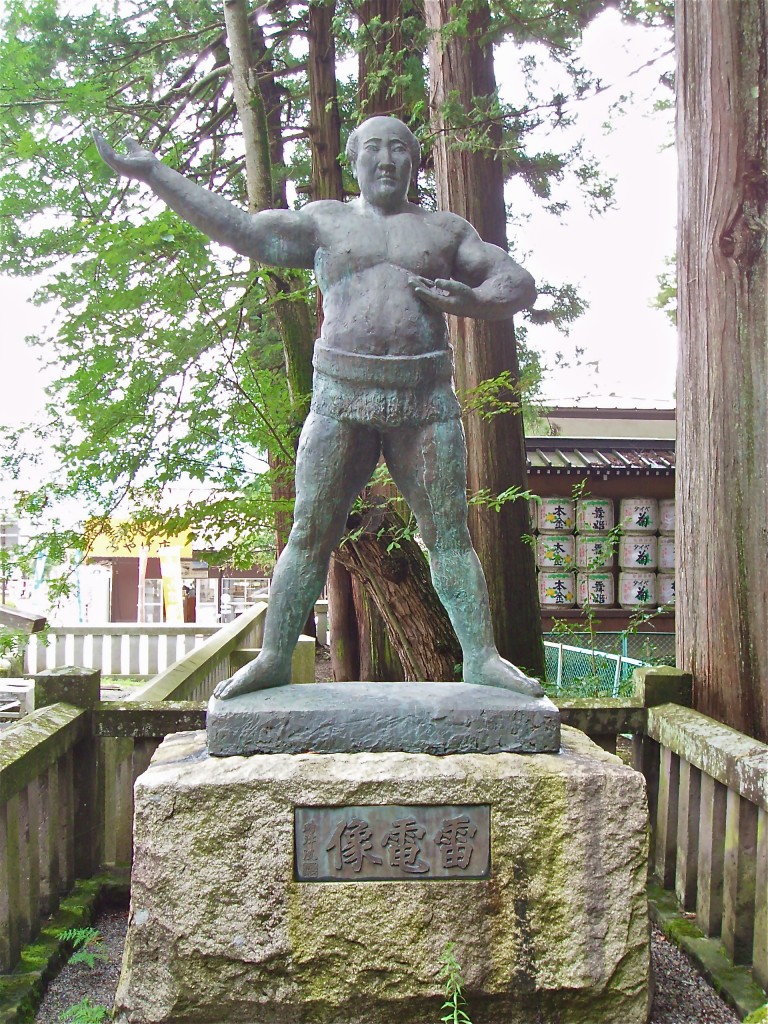
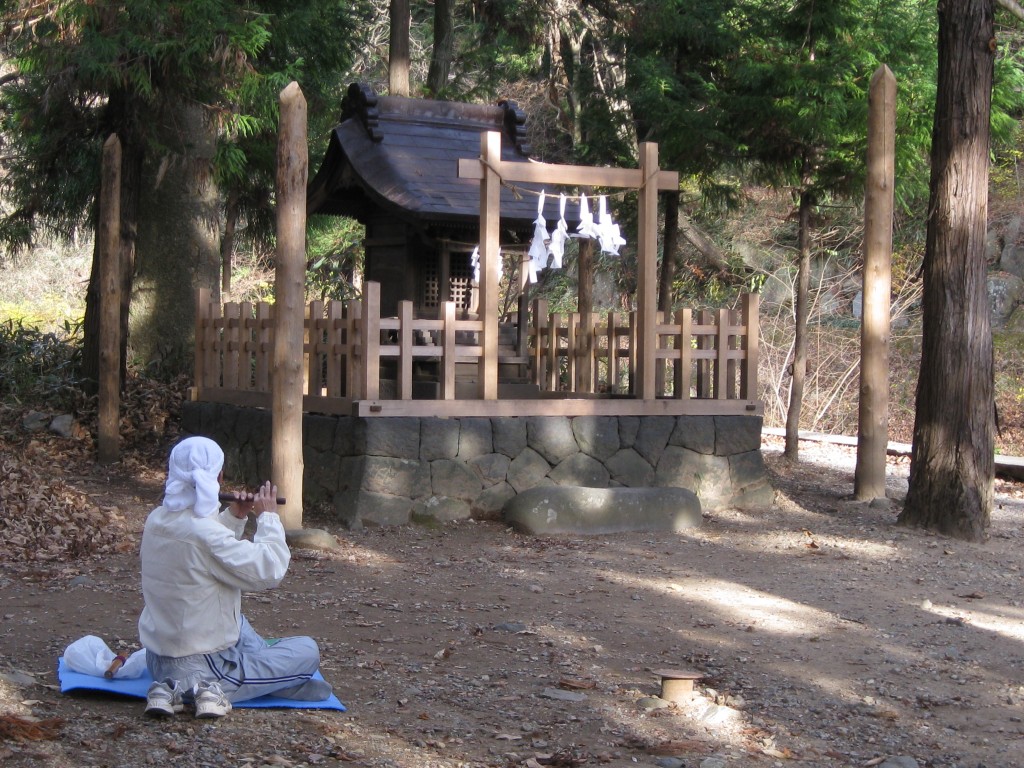
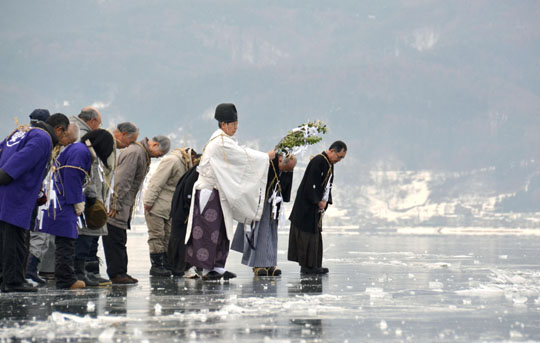

Suwa Shrine is high on my list of sacred places to visit in Japan, especially if you were able to see God’s Crossing (although I understand that this is increasingly unlikely). It is important to acknowledge I feel that the Shrine used to be one of the more powerful Shrine-Temple complexes in Japan prior to the Meiji Restoration. From what I understand it was targeted during the separation of Shinto and Buddhism because of its influence. Despite protestations from the locals, and offers to move the buildings elsewhere, the Buddhist infrastructure and rites were dismantled at Suwa with great haste. This included a five-tiered pagoda which would have been striking to see. Recognising the changes that have occurred brings attention to the highly syncretic nature of Suwa worship over much of its history.
Thanks very much for your input, Jann, and the historical info. There’s a detailed account by the way of the historical development and physical attributes by Joseph Çali in Shinto Shrines, p. 195. Might be helpful when you go visit… Delightful part of Japan, I’m sure you’ll enjoy it and nearby Matsumoto.